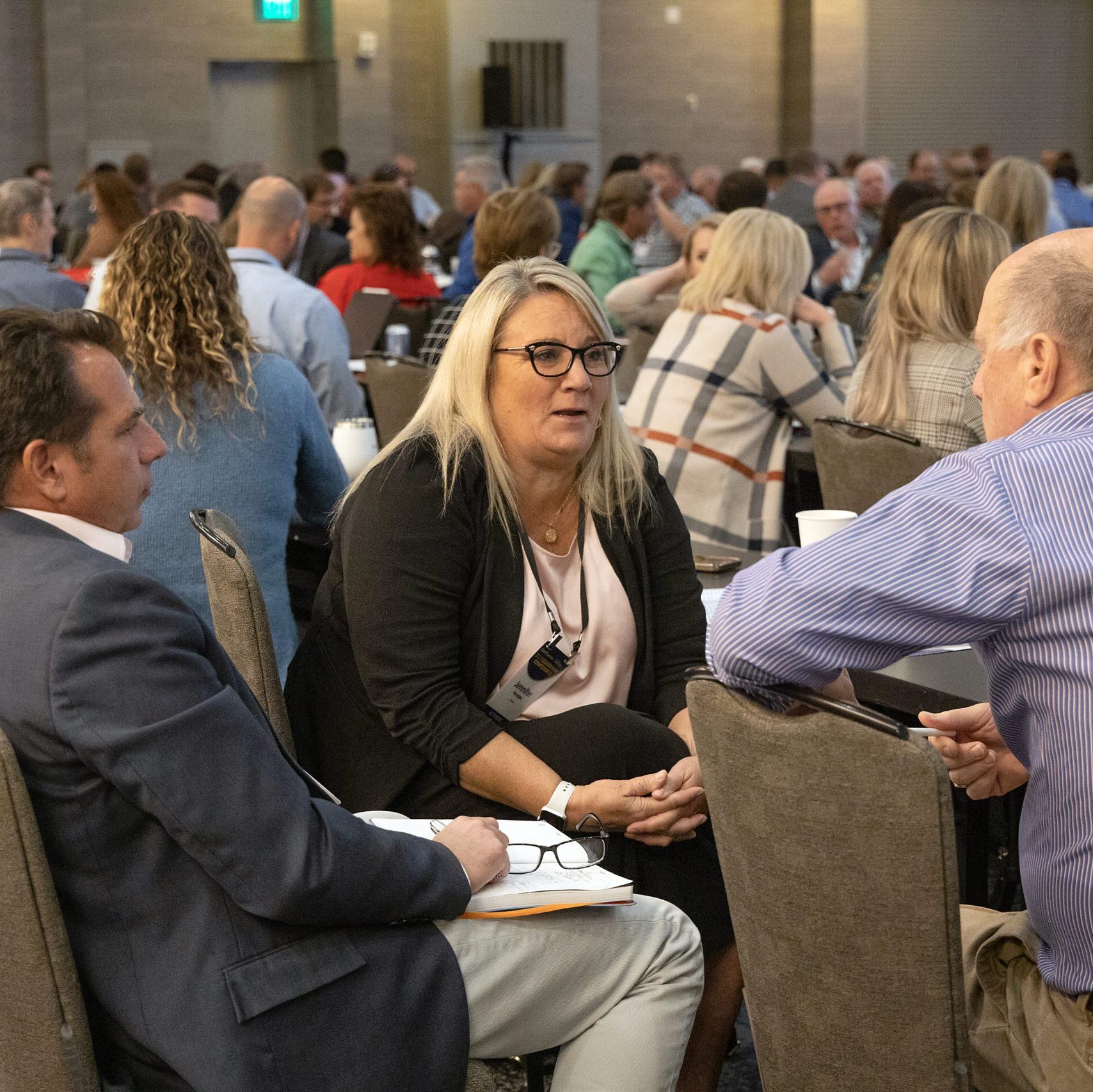


Uncertainty is once again the top word in manufacturing CEOs’ lexicon when it comes to describing the business environment. Fortunately, they agree that the uncertainty surrounding trade policies and deals is likely to resolve within the next 12 months, if not sooner. This hope, of certainty and resolution, is what’s driving the third consecutive upswing in manufacturing CEO outlook in June, after a 30 percent nosedive in March—when tariff talks began.
According to our latest CEO Confidence Index survey, conducted June 3 and 4, manufacturing leaders rate future business conditions at 6 out of 10—up 11 percent from May, on the back of a 5 percent gain from April. And after a slight dip in their overall assessment of current business conditions last month, their rating is up 6 percent this month to 5 out of 10, down only 16 percent from January levels (pre-tariff talk). Their forecast of future business conditions is now only 12 percent off from its January levels.
The divide between manufacturers with international exposure and those with strictly U.S. operations is once again insignificant this month as deals and pauses on tariffs from many nations, especially those important to manufacturing, have been put in place in recent weeks.
“I believe that the current tariff uncertainty that is adversely affecting many business sectors, especially for a U.S. toy manufacturer like American Plastic Toys, will be settled in six to 12 months,” says John W. Gessert, CEO of American Plastic Toys.
Another U.S. manufacturing CEO, Michael Araten of The Rodon Group, agrees and says, “We are in the sweet spot of the tariffs—as a USA manufacturer—our leads are up 300 percent—we have landed new projects and have a two-year backlog in our mold making operation. While I am mindful of potential demand destruction—I am cautiously optimistic this will be fairly muted.”
This month, only 26 percent of manufacturing CEOs expect a recession of some kind over the next six months, now a slightly lower proportion than the 28 percent of CEOs in industries other than manufacturing who agree. This proportion has fallen significantly from last month, when 49 percent of manufacturers forecasted a recession in the short-term.
Additionally, manufacturers were asked in June to rate consumer demand for their company’s product so far this year compared to last year, and the responses are split. In almost exact thirds, manufacturing CEOs report that demand for their product is better, worse or unchanged from last year, with a slight plurality (36 percent) reporting that demand is lower. This is the case regardless of whether their operations have international exposure or not.
CEOs in industries other than manufacturing report a similar pattern, with a slight plurality who say that demand is unchanged from last year (36 percent).
When discussing expectations for how business conditions will impact their respective company’s revenues over the next 12 months, globally exposed manufacturers are actually a bit more optimistic than their U.S.-only peers this month: 67 percent of U.S.-only manufacturing CEOs project increases in revenues compared to 70 percent of globally operating manufacturers. This is compared to 57 percent vs. 52 percent, respectively, in May.
Profit projections are also rising. In June, 63 percent of U.S.-only manufacturers expect profit growth vs. 58 percent for those with international exposure (compared to only 52 and 42 percent in May, respectively).
The proportion of companies projecting increases in profit and revenues regardless of international exposure are still a far cry from January projections when 80 percent of manufacturers (overall) projected increases in profit in 2025 and 91 percent projected increases in revenues.
When looking at plans for capital expenditures over the next 12 months, manufacturers with global exposure appear to have switched up their strategy with 46 percent reporting planned increases in capex in June (compared to 28 percent in May). For U.S.-only manufacturers, still half plan on keeping capex unchanged in the year ahead, with only a third reporting planned increases (up from 26 percent in May). Still, a larger proportion of manufacturers with international exposure are planning decreases in their capex compared to U.S.-only firms.
When it comes to hiring and operating costs…
Since 2002, Chief Executive Group has been polling hundreds of U.S. CEOs at organizations of all types and sizes, to compile our CEO Confidence Index data. The Index tracks confidence in current and future business environments, based on CEOs’ observations of various economic and business components. For additional information about the Index and prior months data, visit ChiefExecutive.net/category/CEO-Confidence-Index/



0

1:00 - 5:00 pm
Over 70% of Executives Surveyed Agree: Many Strategic Planning Efforts Lack Systematic Approach Tips for Enhancing Your Strategic Planning Process
Executives expressed frustration with their current strategic planning process. Issues include:
Steve Rutan and Denise Harrison have put together an afternoon workshop that will provide the tools you need to address these concerns. They have worked with hundreds of executives to develop a systematic approach that will enable your team to make better decisions during strategic planning. Steve and Denise will walk you through exercises for prioritizing your lists and steps that will reset and reinvigorate your process. This will be a hands-on workshop that will enable you to think about your business as you use the tools that are being presented. If you are ready for a Strategic Planning tune-up, select this workshop in your registration form. The additional fee of $695 will be added to your total.

2:00 - 5:00 pm
Female leaders face the same issues all leaders do, but they often face additional challenges too. In this peer session, we will facilitate a discussion of best practices and how to overcome common barriers to help women leaders be more effective within and outside their organizations.
Limited space available.

10:30 - 5:00 pm
General’s Retreat at Hermitage Golf Course
Sponsored by UBS
General’s Retreat, built in 1986 with architect Gary Roger Baird, has been voted the “Best Golf Course in Nashville” and is a “must play” when visiting the Nashville, Tennessee area. With the beautiful setting along the Cumberland River, golfers of all capabilities will thoroughly enjoy the golf, scenery and hospitality.
The golf outing fee includes transportation to and from the hotel, greens/cart fees, use of practice facilities, and boxed lunch. The bus will leave the hotel at 10:30 am for a noon shotgun start and return to the hotel after the cocktail reception following the completion of the round.